10 Everyday Foods This Expert Says Are "Absolutely Destroying Your Health"
They're in your kitchen right now. Foods you eat every day, perhaps even foods you think are healthy. But these everyday staples might be undermining your health without you realizing it. Dr. Anthony Balduzzi, founder of The Fit Father Project and The Fit Mother Project, has helped over 30,000 families transform their health through proper nutrition. After losing his father at a young age, he dedicated his life to studying health and nutrition, earning degrees from the University of Pennsylvania and a doctorate in naturopathic medicine. "These foods are like landmines when you're out in the world," Dr. Balduzzi warns. Here are the top 10 foods he says you need to watch out for – and what to eat instead.
Store-Bought Chips: Your Daily Diet Destroyer
"Chips are literally the living definition of empty calories," Dr. Balduzzi highlights in his post. Just three ounces of chips weekly adds over 24,000 calories to your diet annually – equivalent to about seven pounds of fat. The combination of low-quality potatoes, inflammatory oils, and excessive salt makes them particularly harmful. Instead, try brands made with almond or cassava flour and avocado oil, or make your own apple or zucchini chips at home.
Non-Organic Bread: The Pesticide Problem
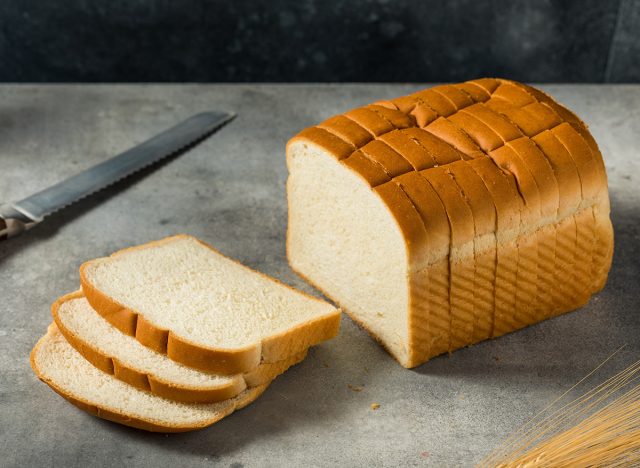
"If you're eating non-organic bread, your bread is sprayed with glyphosate, which is also known as Roundup," Dr. Balduzzi reveals. This pesticide can damage your gut microbiome and potentially cause various health issues. The solution? Switch to organic sprouted bread like Ezekiel Bread or organic sourdough, which offer better nutrition and are often easier to digest.
RELATED: This Nutritionist Shares a 3-Ingredient "Lazy Girl Pasta" That Helped Her Lose Weight
Commercial Baked Goods: The Thyroid Disruptor
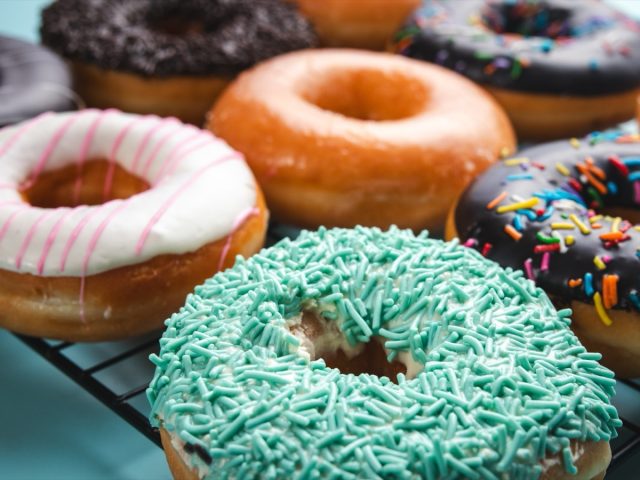
Those tempting pastries and donuts aren't just sugar bombs. "These bromides actually get into your thyroid gland," Dr. Balduzzi explains, "and block the absorption of iodine, leading to a sluggish metabolism." Many commercial baked goods contain these thyroid-disrupting compounds. Instead, opt for healthier breakfast options like avocado toast on organic bread or egg-based recipes.
Cream-Based Pasta Dishes: The Hidden Calorie Trap
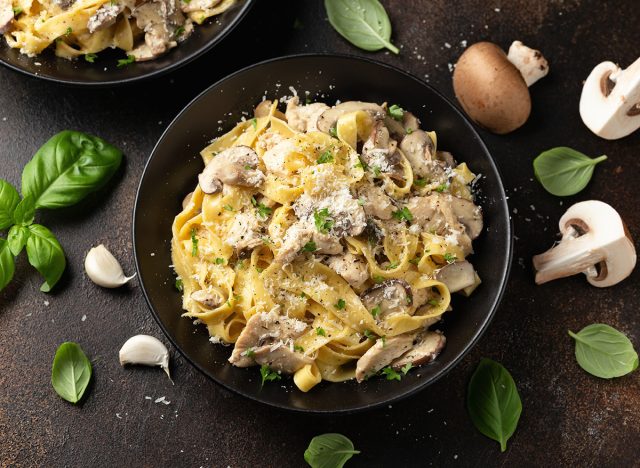
"Even a cup of chicken Alfredo has about 500 calories," warns Dr. Balduzzi, "and let's be honest, this stuff's so good, you want to eat six cups." His solution? Choose organic wheat or legume-based pasta with low-sugar marinara sauce instead. The lycopene in tomato-based sauces offers additional health benefits for vision and overall health.
Fried Fish and Chicken: The Heart Risk Factor
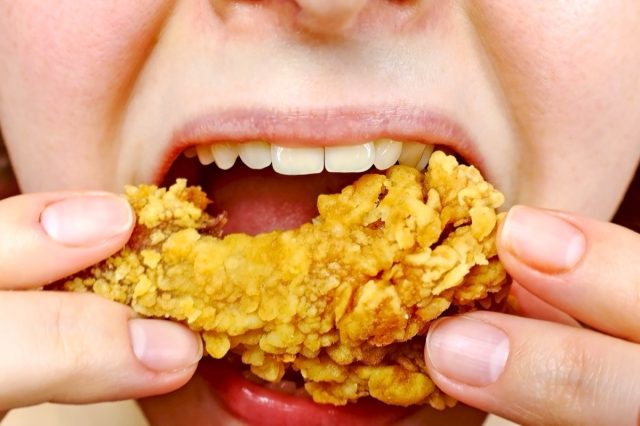
The evidence is clear: eating fried fish just once weekly increases heart failure risk by 48%. "Fried foods are toxic for your cardiovascular system," Dr. Balduzzi states. The high-temperature frying creates inflammatory compounds that damage your arteries. Instead, opt for baked, grilled, or air-fried preparations.
RELATED: 12 Genius Hacks a Dietitian Uses to Double Her Protein "Without Touching Chicken"
Processed Meats: The Cancer Connection
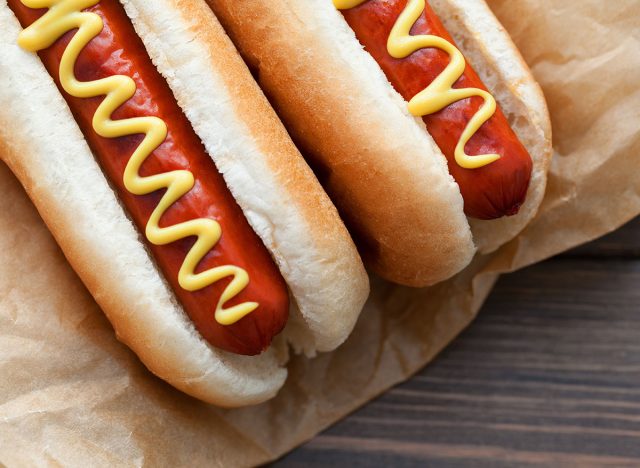
"If there is one resounding thing that nutritionists agree on, it's that processed meats are bad for you," Dr. Balduzzi emphasizes. Hot dogs, sausages, and deli meats contain nitrites and nitrates that can increase cancer risk, particularly colon cancer. Choose whole cuts of meat instead, like chicken breast or grass-fed beef.
French Fries: The Aging Accelerator
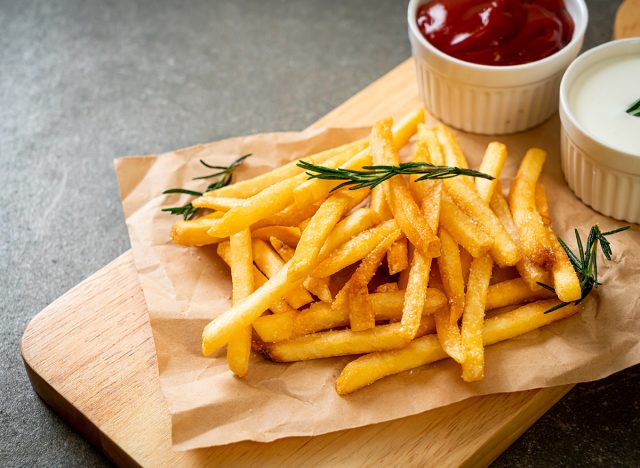
"When we take carbohydrates like potatoes and cook them on high heat with vegetable oils, it creates compounds called acrylamides," Dr. Balduzzi explains. These compounds accelerate aging and increase cancer risk. His alternative? Bake sweet potato wedges with olive oil and seasonings for a healthier version of this popular side dish.
Excessive Dairy: The Addiction You Didn't Know About
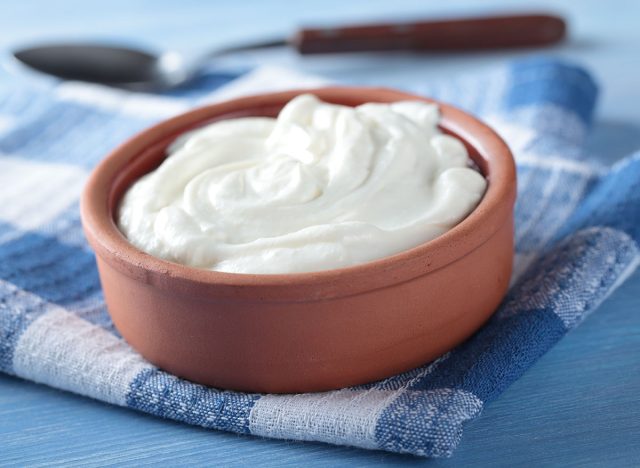
"Dairy has a compound called beta casomorphine, which is a natural opioid," Dr. Balduzzi reveals. This explains why we often feel good after consuming dairy – and why it can be addictive. He recommends limiting dairy to occasional use and choosing fermented options like kefir or Greek yogurt when you do indulge.
Processed Plant-Based Foods: The False Health Hero
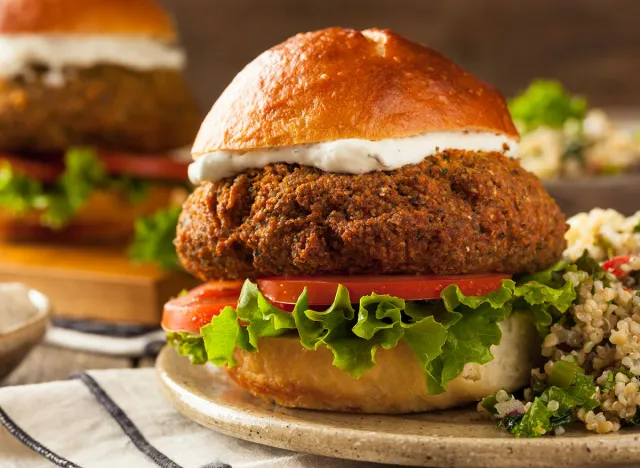
Not all plant-based foods deliver on their healthy promise. "What's not awesome is a lot of these fake foods that are trying to be vegan," Dr. Balduzzi cautions. Many contain pesticide-sprayed soy protein and artificial additives. Instead, choose whole food plant-based options like black bean burgers or vegetarian chili.
RELATED: Nutritionist Reveals 8 Signs You're Eating Too Many Carbs
Sugary "Health" Drinks: The Wellness Impostor
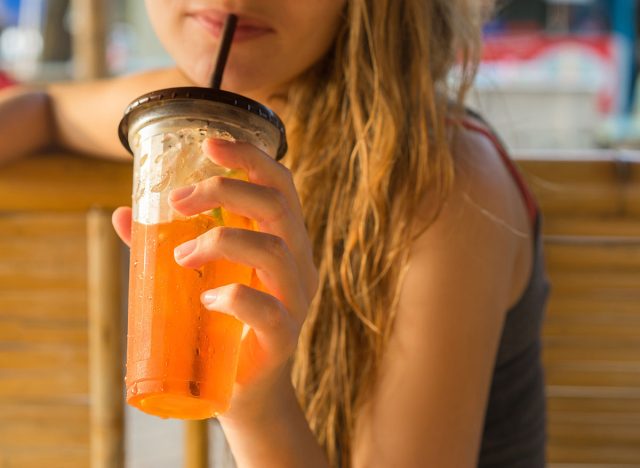
"These things are glorified sugar shots," Dr. Balduzzi warns about supposedly healthy fruit drinks, noting that many contain 30-40 grams of sugar per serving. Despite their promises of vitamins and antioxidants, these drinks can seriously impact your health. Stick to whole fruits for natural sweetness and nutrients, or make fresh vegetable-based juices at home. And if you enjoyed this article, take advantage of these 15 Quick Ways to Lose Body Fat Percentage in a Week.





